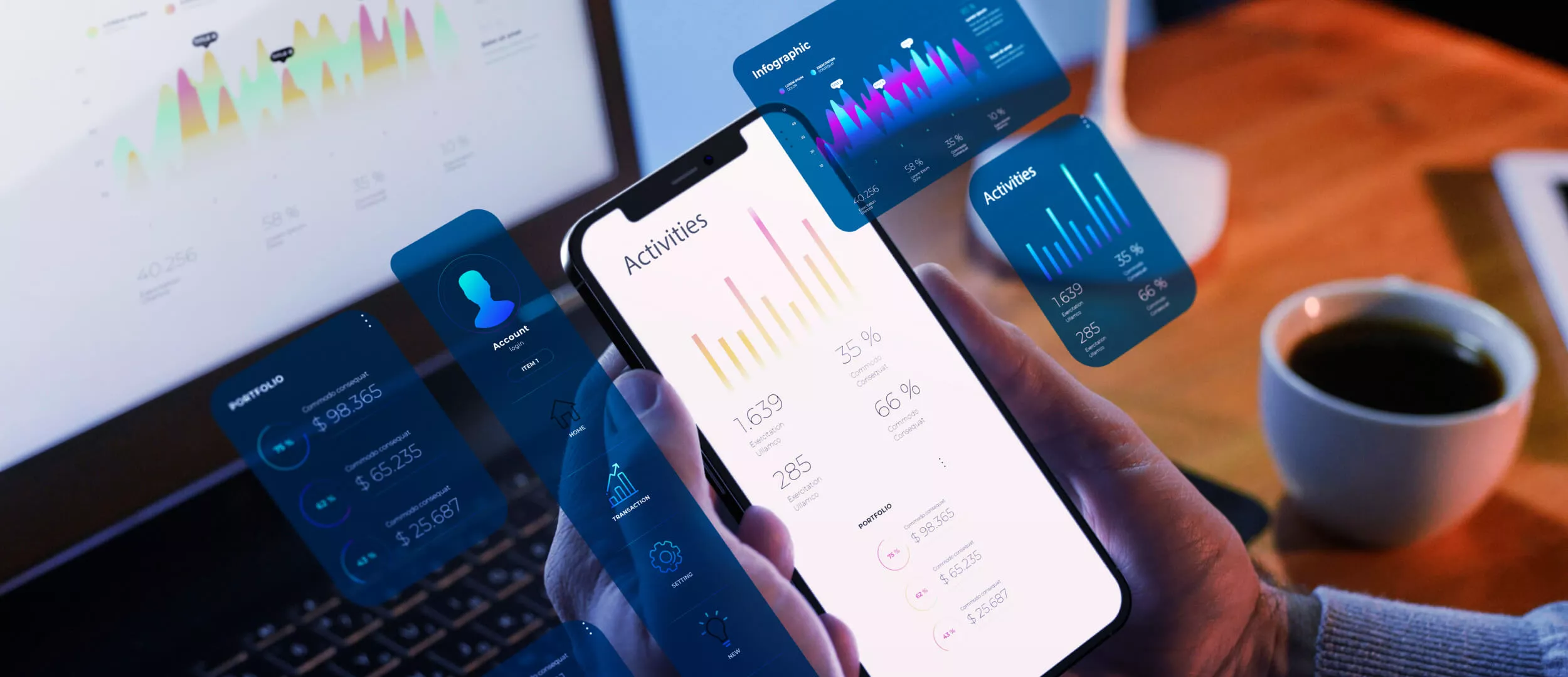
The software development industry is highly competitive, constantly progressing, and requires continuous innovation. Our modern world is customer-centric. With technological advances, customer expectations as to UX also grow. Users today expect high software quality, convenience, consistency, and interaction.
You should realize the fundamental role of user experience feedback. Nowadays, it helps to be a successful player in the software development field. It's critical for growing business and keeping your customer base loyal and satisfied.
Today we are going to find out what is user feedback and why it matters.
The Importance of Understanding User Feedback
What is user experience, and why is it important? User feedback is basically data collected from online users. They express their opinion as to the software solution, service, or overall digital product experience. It may be a website or an application, web or mobile. This data may give developers, UX designers, web analysts, and marketers valuable insights. They reveal how the audience interacts with their software. They see which features the users consider useful, what difficulties they face, and what they truly need.
This will help you detect usability issues, bugs, and other areas for improvement. Such things may not be apparent through internal testing. You hear about your customer’s pain points and decide how to solve them before they have caused problems.
For gaining this info you should be in contact with your customers. It would be best if you asked them what they think, and how they experience their user journey. Inquire also what needs to be improved. The end users are those who purchase and use your product daily. So, being involved in a collaborative process, they help you improve almost every step of the development. At the same time, the users will be more likely to stay loyal to your brand if they feel involved and important.
The Benefits of User Feedback in Software Development
Let’s look closer at the benefits of user feedback. We'll check how it may help improve not only the software but also the business. Identifying Customer Preferences
Listening to your customers, you may detect areas for improvement. It also helps prioritize their preferences and needs. You can develop and design your product accordingly. Ensure it aligns with customer expectations. People stay loyal when they feel their opinion is valued. Moreover, if it's incorporated into development, users feel they become a part of the process. So, build strong relationships with customers and get their higher retention. Gain a competitive advantage in the market by building your user-friendly and intuitive product.
Identification of Bugs and Technical Problems
User feedback is a valuable source of insights. They may relate to software bugs, errors, malfunctions, and failures. All these influence the performance and functionality of a product. You can ensure the cutting-edge quality of a product if you address the issues timely. It will also help you make software solutions meet the audience's expectations.
Enhancing feature development
It's possible to identify the software's most-demanded functions by analyzing user feedback. Just keep your eyes on your competitors and products in the market. The importance of feedback should not be underestimated. Based on it, you can prioritize your product updates according to user expectations.
Enhance the team's efficiency
Why is user experience so important for development team efficiency? The answer is quite simple. On the one hand, you can gather opinions directly. It'll save lots of time on hypotheses, developing certain features, and corresponding testing. On the other hand, by prioritizing development tasks based on user feedback, resources can be allocated more effectively. We state it for sure as Stfalcon is a software developer with 15 years of experience in the background.
Lower the Developmental Costs
Lower development expenses are a logical consequence of the previous statement. You can save means on efficient resource and effort planning and implementing. That’s a life hack our team often uses. More than that, developers are able to detect and address quality issues early on. It helps avoid dealing with the unpleasant consequences later.
Want a web app that does more?
Let's build a solution that's smart, sleek, and powerful.
Alina
Client Manager

Strategies for Collecting User Feedback
Guess you now realize why user feedback is important, but what is the most effective way to get it. Based on Stfalcon's experience, we distinguish several strategies that are worth their salt. We are going to share them with you.
Surveys and Questionnaires
This is a popular way of collecting feedback. Create surveys in various forms for various aspects of your software product. Ask about functionality, features, UX, or overall satisfaction. A well-structured questionnaire should be brief and focused. Create it relevant to the purpose of your survey and your software and be respectful of the user’s time. Make sure you reach diverse groups of users. Think about how to encourage them to participate through certain incentives.
Real-time feedback can be gathered through specific forms integrated into the software. It allows users to share their opinions right while using the software. As our experience prompts, useful metadata, helps to fix issues more quickly and efficiently. So, consider log files or screenshots, and accompanying forms.
Social Media Monitoring
Keeping your eye on social media networks, you see what is said about your product. You will get extremely valuable insights if you manage to communicate with your audience on social media wisely. There you can get info about the users’ pains and attitudes as well as figure out areas for improvement.
Interaction with Customer Service
Arranged through live chats customer service gives an audience impression of personal connection. At the same time, it gives you the possibility of immediate interaction and gathering feedback. Customer service as well as technical support can address the users’ problems, questions, and concerns right away. Personalization and the sense that you are heard is what remains the evergreen trend.
Improving User Experience by Analyzing Feedback
Gathering user feedback is just one step. It should be followed by careful and profound analysis. Interpreting feedback data, we, at Stfalcon, gain an understanding of how users perceive our software. It helps our development team make data-driven and well-weighted decisions. They often concern software improvements and overall UX enhancements.
As an experienced development team, we have worked out our own systematic approach to user feedback analysis. The key stages of this process are collecting feedback, analyzing it, and interpreting the insights. We have discussed the main approach to gathering user opinions above. You also need analytic tools as they are valuable means of data analysis.
They help identify up-to-date trends, patterns, and themes. However, the first step in data analysis is to extract the feedback data from all the sources. They may include survey responses, online reviews, and social media platforms' data. The relevant interactions from customer and technical support chats can also be captured.
All the data should be structured for easy categorization and organization. Create certain fields for capturing essential information. They may include the source, date and time of feedback, its type, and customer identifiers. You should choose the attributes relevant to your analysis goals and business needs. They may concern product features, customer service, UX, and pricing. Choose the critical aspects of your business that users commonly mention.
It’s better to establish the process in such a way that your data repository regularly updates with new feedback. It will allow you to follow the up-to-date software user needs, attitudes and issues and stay in line with the new trends.
You may fail to identify similar patterns in customer feedback right away. But what is not evident from the first glance may be detected through attention to detail and an iterative approach. That's how you discover meaningful insights.
The techniques that you may use are theme, keyword, and finally sentiment analysis. It will help you identify the most common topics and issues in customer feedback. You'll also see the most burning problems and common areas of satisfaction.
Tie Everything Together for a Successful Development Process
When the feedback is gathered and analyzed it’s vital to use the insights most productively. Collaboration is the key to the purpose. When you manage to bring the effort of multiple teams and departments together, you can craft an innovative and intuitive product.
So, take care to implement a collaborative approach between the teams and departments. Developers, designers, customer support specialists, and business analysts should cooperate tightly. By sharing insights they ensure creating the software that will meet consumer expectations.
To achieve this, it’s critical to prioritize actionable insights. Recurring themes from user feedback will help identify essential metrics. They may be sentiment distribution, level of customer satisfaction, and areas of improvement.
The specialist should determine the points that influence overall UX and key business metrics. Then they can evaluate and prioritize the points able to improve KPIs or impact achieving the goals directly. Based on the results, create an action plan and task for each department. The more detailed your plan is the better will be the result. So, outline the necessary steps, and set timeframes and deadlines. Then define responsibilities and make sure to distribute the necessary resources. To make sure your effort is coordinated, consider collaboration with relevant teams or outside experts.
If you want to implement user-centric solutions make sure you involve your audience in active communication. It will make your product truly resonate with your target audience.
Conclusion
Stfalcon’s 15 years of experience have proven the utmost importance of user feedback for software development. Besides the above-mentioned benefits, we'll also note more agility in development. Here also belong reduced risks and a balanced speed-and-quality ratio. By seeking and actively integrating user feedback you can ensure you target the right audience when crafting a product.
Taking user-base needs and preferences into account, you can create enjoyable UX. More than that you can stand out as an industry leader, differentiating from other rivals.
With user feedback in mind, our team of developers prefers focusing on the features that matter to the customers. So, we do not waste time on unnecessary elements and functions. It results in speeding up development without compromising product quality.
If you still doubt how to hear the voice of your audience and make it your partner, contact us. We’ll make things clearer for you. We are also eager to lay a strong foundation for your success through user-centric solution development on your request.
So, let’s just take the first step.
FAQs on the importance of user feedback in software development
How can user feedback help prevent feature overload?
Carefully studying user feedback, you'll identify the needs and preferences of the audience. You can also detect the features used most and spot the ones that are neglected. So, having armed yourself with this knowledge you can adjust the development process to the user-base needs. You will thus avoid unnecessary functionality.
How does user feedback improve software quality?
Why is user experience important for software quality? Listening carefully to your software audience you can spot their pain points, areas for improvement, and user concerns. User feedback is a reliable instantaneous means to get insights about your product. It may prompt you about the bugs and glitches that may occur. After careful data analyses expert team plans the process of product development with all the critical issues in mind. They also allocate resources accordingly. So the best technological solutions, tools, and approaches would guarantee the best quality.
How can user feedback help reduce development costs?
This is the question of the right development effort and resource distribution. Based on customer feedback analysis, you learn what exactly you need to develop, implement, or improve. So, you can focus your effort only on the effective and targeted actions. You can avoid ineffective UX and unnecessary experimenting with product functionality. It will also relieve you of the unneeded testing of various hypotheses. Naturally targeted and focused development effort sensitively saves the budget. It works both for software solution creation and for enhancement as well.



